I am using ellipsoidhull() function to derive an ellipse that bounds all the points in x,y coordinates. I then use point.in.polygon() function to predict if a new set of X,Y co-ordinates fall inside/outside the ellipse.
Instead of plotting an ellipse that bounds all the points in (x,y), is it possible to use say 80% of the points? The 80% of the points may be chosen to form the most compact or smallest elliptical area.
> xy
x y
3.076 5.208
3.046 5.123
2.993 5.108
3.062 5.134
3.168 5.223
3.138 5.284
3.166 5.319
3.226 5.411
3.262 5.417
3.215 5.234
3.086 5.019
3.199 5.167
3.274 5.596
3.293 5.608
3.195 5.396
3.294 5.374
2.974 5.539
3.268 5.377
3.192 5.298
3.08 4.916
3.117 4.985
3.128 5.118
3.21 5.373
3.184 5.282
3.27 5.291
3.074 5.175
> Query
X Y
3.03 5.008
2.99 5.018
2.987 4.944
2.994 4.899
2.911 4.963
2.913 4.942
2.966 4.969
3.079 5.011
3.096 5.268
2.992 5.169
3.205 5.466
3.257 5.776
3.154 5.563
3.16 5.192
3.12 5.446
3.271 5.719
3.154 5.478
3.143 5.454
3.123 5.439
3.075 5.224
3.264 5.56
3.288 5.404
3.237 5.499
3.207 5.47
3.207 5.459
3.11 5.23
3.301 5.605
3.139 4.823
library(cluster)
exy <- ellipsoidhull(as.matrix(xy))
ellipse <- predict(exy)
library("sp")
point.in.polygon(Query$X, Query$Y, ellipse.FAM[,1], ellipse.FAM[,2])
